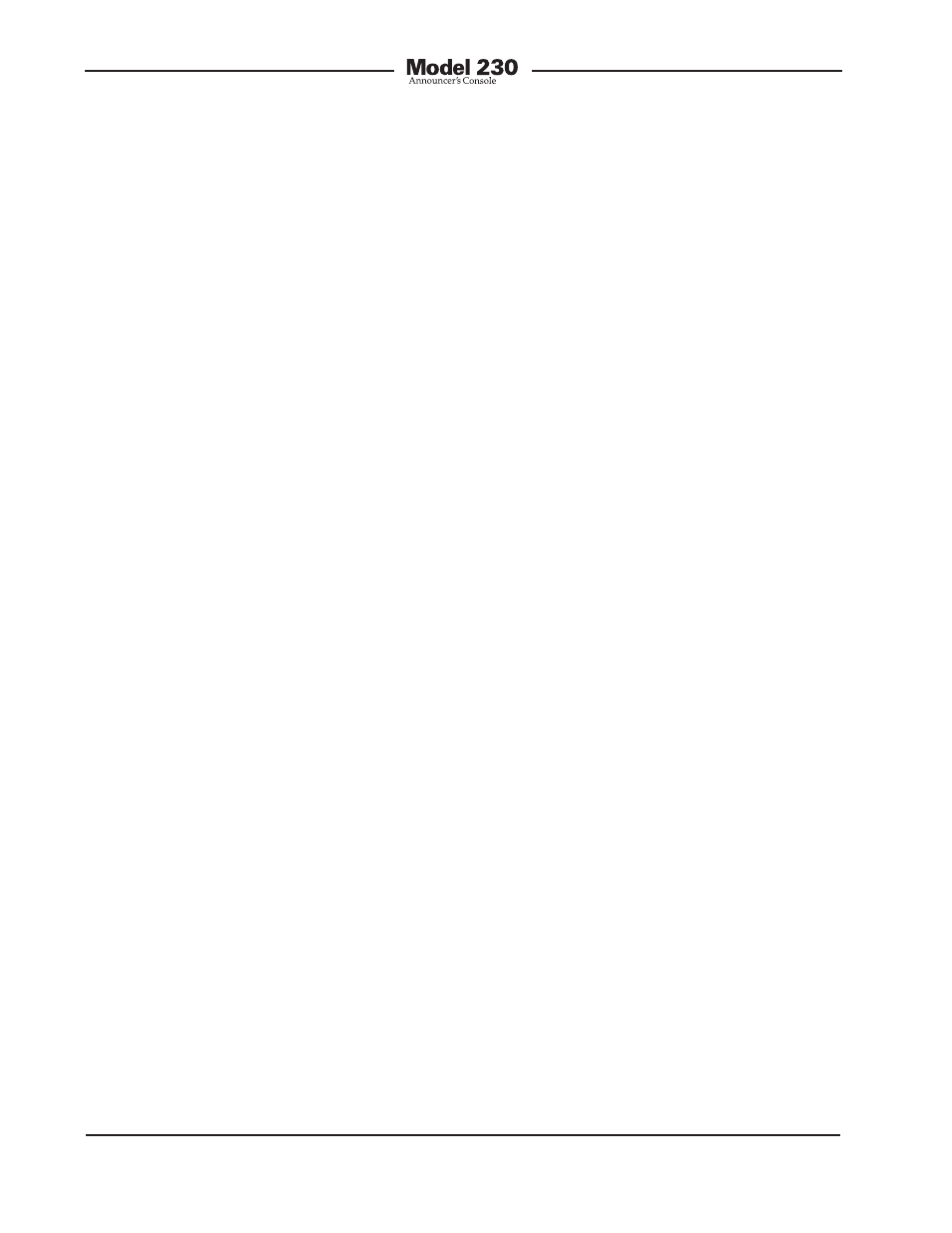External power input – Studio Technologies 230 2014 User Manual
Page 16

Issue 9, November 2014
Model 230 User Guide
Page 16
Studio Technologies, Inc.
The intercom line is connected to the
Model 230 by way of a 3-pin female XLR
connector which is located on the back
panel. The mating connector (male)
should be wired so that common is on
pin 1, DC with channel 1 audio is on pin
2, and channel 2 audio is on pin 3. With
single-channel intercom lines common is
on pin 1, DC power is on pin 2, and audio
is connected to pin 3.
The Model 230’s intercom interface is
directly compatible with broadcast and
production party-line intercom lines as-
sociated with systems from manufacturers
such as RTS and Clear-Com. Intercom
lines associated with other systems
should be equally compatible. RTS TW-
series systems are normally interfaced
using 3-pin XLR connectors. These con-
nectors are wired with common on pin 1,
DC power and channel 1 audio on pin 2,
and channel 2 audio on pin 3. With many
Clear-Com systems, common is on pin 1,
DC power is provided on pin 2, and audio
is provided on pin 3.
The DC power supplied by the connected
intercom line is generally sufficient to
operate the Model 230’s circuitry. The
acceptable input range is 24 to 32 volts,
with a required current of 125 milliam-
peres. Note that the specified input volt-
age is given when measured directly at
the Model 230’s intercom connector, not
at the source of the intercom line.
External Power Input
An external source of 24 volt DC power
can be connected to the Model 230 by
way of a 2.1 x 5.5 mm coaxial power jack
which is located on the back panel of
the unit. The center pin of the jack is the
positive (+) connection. While the require-
ment for the external source is nominally
24 volts, correct operation will take place
over a 20 to 30 volt range. The Model 230
requires 90 milliamperes at 24 volts DC for
correct operation. Included with each Mod-
el 230 is a 24 volt DC external power sup-
ply. The power supply’s DC output cable
has been terminated with a Switchcraft®
S760K coaxial power plug. This “lock-
ing” type of plug correctly mates with the
Model 230’s 24 Vdc input jack. The locking
feature is important, allowing the external
power source to be securely attached to
the Model 230.
As previously discussed in this user guide,
an IFB circuit or party-line intercom line
connected to the Model 230 can serve as
the unit’s power source. Alternately, an ex-
ternal 24 volt DC source can be connected.
For redundancy, the IFB circuit, the inter-
com line, and the external source can be
connected at the same time. If one of them
becomes inoperative, one of the remaining
sources can provide all Model 230 power.
The Model 230’s circuitry establishes the
priority in which the unit draws its operat-
ing power. If an external source of 24 volt
DC power is connected, it will always serve
as the primary source. This minimizes the
impact that the unit’s power draw could
have on a connected IFB circuit or inter-
com line. If no external source of 24 volt
DC is connected and both an IFB circuit
and an intercom line are connected, power
will be drawn only from the intercom line.
This is because intercom lines, by design,
are better able to supply power to devices
such as the Model 230. Multiple devices,
such as intercom belt packs, are expected
to be connected to, and powered by, a
single intercom line. IFB circuits are quite
different, typically designed to only supply
a limited amount of energy.
